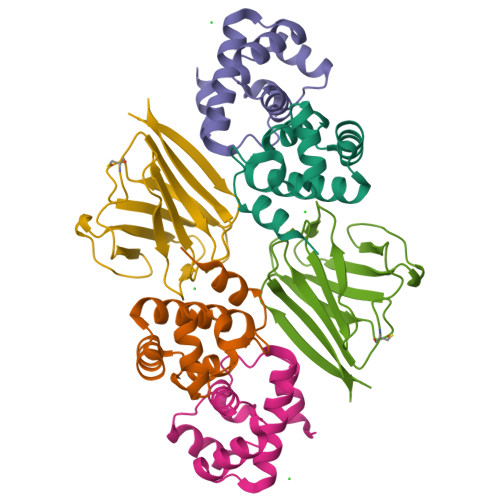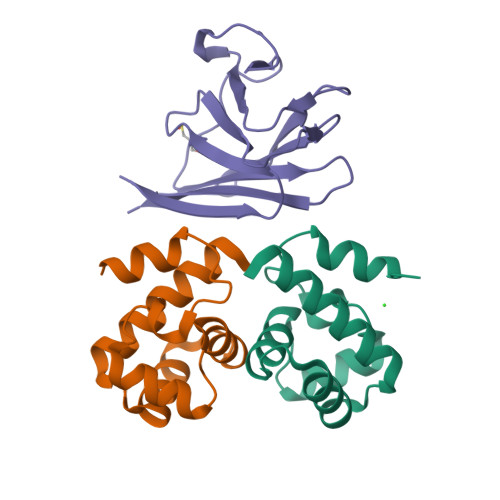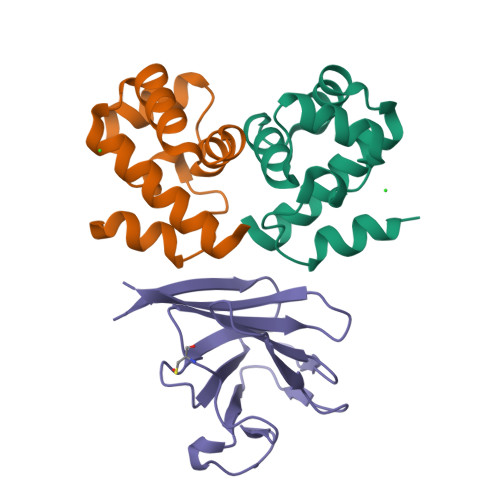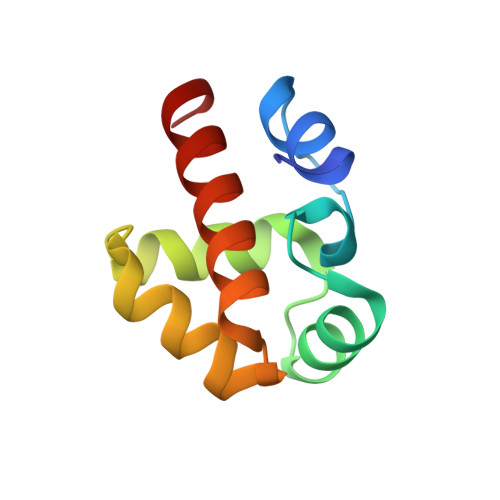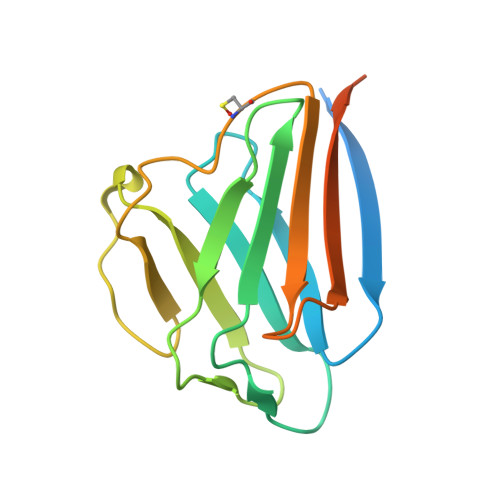The BAF A12T mutation disrupts lamin A/C interaction, impairing robust repair of nuclear envelope ruptures in Nestor-Guillermo progeria syndrome cells.
Janssen, A., Marcelot, A., Breusegem, S., Legrand, P., Zinn-Justin, S., Larrieu, D.(2022) Nucleic Acids Res 50: 9260-9278
- PubMed: 36039758
- DOI: https://doi.org/10.1093/nar/gkac726
- Primary Citation of Related Structures:
7Z21 - PubMed Abstract:
Nestor-Guillermo progeria syndrome (NGPS) is caused by a homozygous alanine-to-threonine mutation at position 12 (A12T) in barrier-to-autointegration factor (BAF). It is characterized by accelerated aging with severe skeletal abnormalities. BAF is an essential protein binding to DNA and nuclear envelope (NE) proteins, involved in NE rupture repair. Here, we assessed the impact of BAF A12T on NE integrity using NGPS-derived patient fibroblasts. We observed a strong defect in lamin A/C accumulation to NE ruptures in NGPS cells, restored upon homozygous reversion of the pathogenic BAF A12T mutation with CRISPR/Cas9. By combining in vitro and cellular assays, we demonstrated that while the A12T mutation does not affect BAF 3D structure and phosphorylation by VRK1, it specifically decreases the interaction between BAF and lamin A/C. Finally, we revealed that the disrupted interaction does not prevent repair of NE ruptures but instead generates weak points in the NE that lead to a higher frequency of NE re-rupturing in NGPS cells. We propose that this NE fragility could directly contribute to the premature aging phenotype in patients.
Organizational Affiliation:
Department of Clinical Biochemistry, Cambridge Biomedical Campus, Cambridge Institute for Medical Research, University of Cambridge, Cambridge CB2 0XY, UK.








